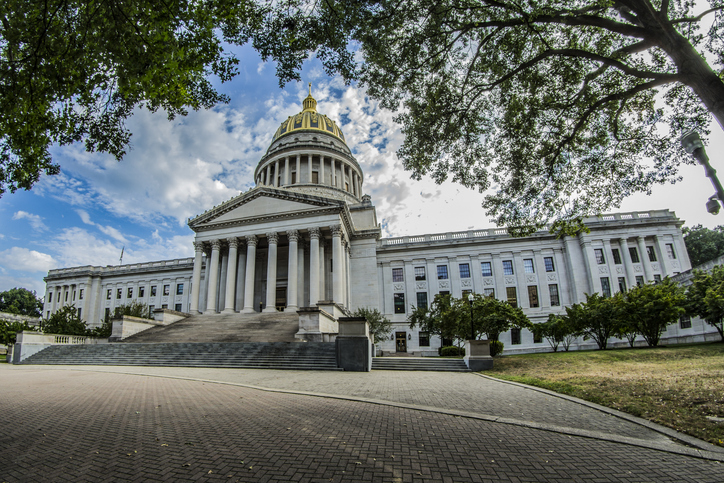US Evacuating Americans Out Of Japan
U.S. Evacuating Americans Out Of Japan
WASHINGTON — The Obama administration has authorized the first evacuations of Americans out of Japan, and said it will charter aircraft to help U.S. citizens wishing to escape elevated radiation levels in the country.
The State Department late Wednesday issued a warning to Americans to avoid travel to Japan and said U.S. citizens in the country should consider leaving. Its authorized departure offers a voluntary evacuation to family members and dependents of U.S. personnel in Tokyo and Yokohama and affects some 600 people.
Senior State Department official Patrick Kennedy said the chartered planes would help private American citizens wishing to leave.
He said people faced less risk in southern Japan, but warned that changing weather and wind conditions could raise radiation levels elsewhere in the coming days.
THIS IS A BREAKING NEWS UPDATE. Check back soon for further information. AP’s earlier story is below.
The Obama administration, taking a tougher stand than Japan on how to deal with a deepening nuclear crisis, urged the evacuation of Americans on Wednesday within a 50-mile radius of a stricken nuclear plant, raising questions about U.S. confidence in Tokyo’s risk assessments.
The U.S. advisory about the Fukushima Dai-ichi plant was far more stringent than the 12 mile radius recommended by Japan. The Japanese government is also urging people within 20 miles of the plant to stay indoors if they cannot evacuate.
Presidential spokesman Jay Carney sought to minimize any rift between the two allies, saying U.S. officials were making their recommendations based on their independent analysis of the data coming out of the region following Friday’s massive earthquake and tsunami.
“I will not from here judge the Japanese evaluation of the data,” Carney told reporters. “This is what we would do if this incident were happening in the United States.”
Until Wednesday, the U.S. had advised its citizens to follow the recommendations of the Japanese government. As late as Tuesday, Carney had said those recommendations were “the same that we would take in the situation.”
But conditions at the plant deteriorated Wednesday, with surging radiation forcing Japan to order workers to temporarily withdraw from the plant. Obama met at the White House with Gregory Jaczko, chairman of the Nuclear Regulatory Commission, who said his recommendation was to evacuate American citizens within a 50-mile radius of the nuclear facility.
During separate testimony on Capitol Hill Wednesday, Jaczko said anyone who gets close to the plant could face potentially lethal doses of radiation.
“We believe radiation levels are extremely high, which could possibly impact the ability to take corrective measures,” Jaczko said.
Carney said American officials alerted their Japanese counterparts Wednesday that the U.S. would be issuing more stringent standards for its citizens.
State Department spokesman Mark Toner said the U.S. had consular personnel in the Miyagi and Ibaraki prefectures and was sending officials out to check on Americans. Transportation options were being organized for U.S. citizens wishing to leave areas affected by the tsunami or within the 50-mile radius, Toner said, but Americans are not being advised to avoid Tokyo, Japan’s capital.
“We have consular teams on the ground,” Toner said. “Where they can, they are going door to door. They are going to hospitals. They are trying everything in their power to reach out and find American citizens.”
Other countries, including Australia and Germany, have issued more sweeping recommendations for their citizens, advising them to consider leaving Tokyo and other earthquake-affected areas. Tokyo, which is about 170 miles from the stricken nuclear complex, reported slightly elevated radiation levels Tuesday, though Japanese officials said the increase was too small to threaten the 39 million people in and around the capital.
The Pentagon said U.S. troops working on relief missions can get closer than 50 miles to plant with approval. Spokesman Col. David Lapan said the U.S. would review requests from the Japanese for assistance that would require troops to move within that radius, though no approval for such movement had been given since the more strict guidelines were enacted.
The Pentagon said troops are receiving anti-radiation pills before missions to areas where possible radiation exposure is likely.
With the arrival of three more ships to the massive humanitarian mission, there were 17,000 sailors and Marines afloat on 14 vessels in waters off Japan. Several thousand Army and Air Force service members already stationed at U.S. bases in Japan have also been mobilized for the relief efforts.
Airmen have been flying search and rescue missions and operating Global Hawk drones and U-2 reconnaissance planes to help the Japanese assess damage from the disasters. The operation is fraught with challenges, mainly how to continue to provide help amid some low-level releases of radiation from the facility, which officials fear could be facing a meltdown.
Weather also temporarily hampered some relief plans on Wednesday. Pilots couldn’t fly helicopters off the deck of aircraft carrier USS Ronald Reagan until late afternoon because of poor visibility. The 7th Fleet said 15 flights with relief supplies were launched from the eight-ship carrier group, about half as many as the 29 flights reported the previous day to deliver food, water, blankets and other supplies.
Several water pumps and hoses were being sent from U.S. bases around Japan to help at Fukushima, where technicians were dousing the overheating nuclear reactors with seawater in a frantic effort to cool them. The U.S. had already sent two fire trucks to the area to be operated by Japanese firefighters, said Cmdr. Leslie Hull-Ryde, a Pentagon spokeswoman.
RELATED:
Second Earthquake Strikes Japan After Tsunami Kills Hundreds















